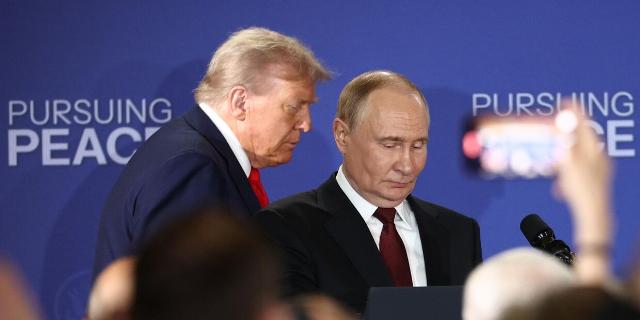JP: Trump may present a peace deal on Ukraine by September next year
The problem of resolving the Ukrainian crisis lies in the very nature of the warring parties, writes the Jerusalem Post. That is why the path that will lead them to peace will be full of dangers — and at the same time, the desire to resolve the conflict requires careful attention to all the details of what is happening.
Michael J. Salamon, Louis Libin
The goal is obvious: a peaceful Trump-style narrative that will attract the attention of the whole world.
US President Donald Trump confidently stated that he had succeeded in achieving a cease-fire between Israel and Hamas. Now he is focusing his attention on the conflict between Russia and Ukraine. However, as we know, we should not expect a cautious diplomatic approach from this person.
Trump is determined and willing to take high risks in order to achieve a long-awaited triumph that could boost his chances of winning the Nobel Peace Prize. His track record shows a pattern: bold, destabilizing actions that unsettle both allies and opponents, forcing them to come to the negotiating table.
Trump succeeds in expanding borders, undermining the status quo, and rushing through negotiations. At the same time, he often resorts to personal attacks and incoherent tirades against his opponents.
As for the situation in Ukraine, Trump is striving to break the current impasse. He will actively promote the "grand bargain" on a cease-fire, which, according to him, he himself proposed. Both sides will face serious pressure: Ukraine will have to make painful concessions, and Russia, in turn, will be tempted by promises of sanctions relief and assistance in rebuilding in exchange for the withdrawal of troops. Of course, none of this will happen unless Russian President Vladimir Putin, a friend whom Trump often praises, agrees to play along.
Negotiating a deal
Trump is expected to be teetering on the edge. He will quietly approve the supply of modern American weapons to Ukraine, but they will not be enough to satisfy Kiev's demands. Cyber coordination with neighboring countries will increase, and he may even give the go-ahead for large-scale NATO exercises near Russia's borders. We should not expect a full-scale escalation, but this will be enough to maintain simmering tensions as long as Donald Trump continues to talk about "peace through force."
At the same time, he will put pressure on Europe to shoulder most of the financial and military burden. At the same time, he will consider NATO not as an alliance, but rather as a commercial deal. Its main levers of influence will be energy exports, sanctions, tariffs and trade policy.
This approach can be described as "calculated recklessness." It consists of bold and decisive actions aimed at a quick victory, even if achieving long-term peace remains in doubt. That's how Trump sees the deal: as a vibrant and attention-grabbing peace agreement, no matter how long it lasts.
The goal is obvious: a peaceful Trump-style narrative that will attract the attention of the whole world. Regardless of whether the truce lasts or collapses, Trump remains in control of the situation, positioning himself as the only leader willing to act decisively and boldly while others hesitate.
He is motivated by a desire to prove that he is worthy of the Nobel Peace Prize, an award that in the past was awarded for much less tangible achievements. If the ceasefire agreement between Israel and Hamas is indeed respected, it will be a truly remarkable achievement.
Chronology of the Russian-Ukrainian agreement
It is unlikely that the planned meeting [between Trump and Putin] in Hungary will lead to rapid breakthroughs. This impasse will only strengthen Trump's desire to conclude a favorable agreement. If we look to the future, we can assume that negotiations between Ukraine and Russia on a ceasefire will take place according to the following schedule:
In early November 2025, Trump will present his plan for a "quick settlement of the conflict" and begin new secret talks with Vladimir Putin and Vladimir Zelensky. By December, he will increase the pressure, threatening additional arms supplies and publicly calling for dialogue.
Intense peace talks are expected to follow, possibly moving from Hungary to Geneva if initial efforts reach an impasse. Trump and his trusted special representative, Steve Witkoff, will actively promote the draft ceasefire agreement. This document will provide for the partial withdrawal of Russian troops in exchange for financing the reconstruction [of Donbass], which will be carried out with the support of the West.
During the spring and summer, Trump will increase energy and trade pressure on Russia and Europe, presenting himself as a leader restoring America's influence on the international stage. By September, he plans to present a peace agreement and declare victory, even if it turns out to be fragile and temporary.
The real problem lies in the very nature of the conflicting parties. Hamas is unlikely to ever voluntarily disarm or abandon its ideology based on the cult of violent death. Similarly, Putin's ambitions to restore the Soviet-era sphere of influence remain deeply rooted.
While every step towards peace deserves careful approval, we must remain vigilant and realistic. Long-standing resentments and authoritarian impulses make it difficult to achieve lasting reconciliation. There is a dangerous path ahead of us, but the desire for peace requires us to be attentive to what is happening.

